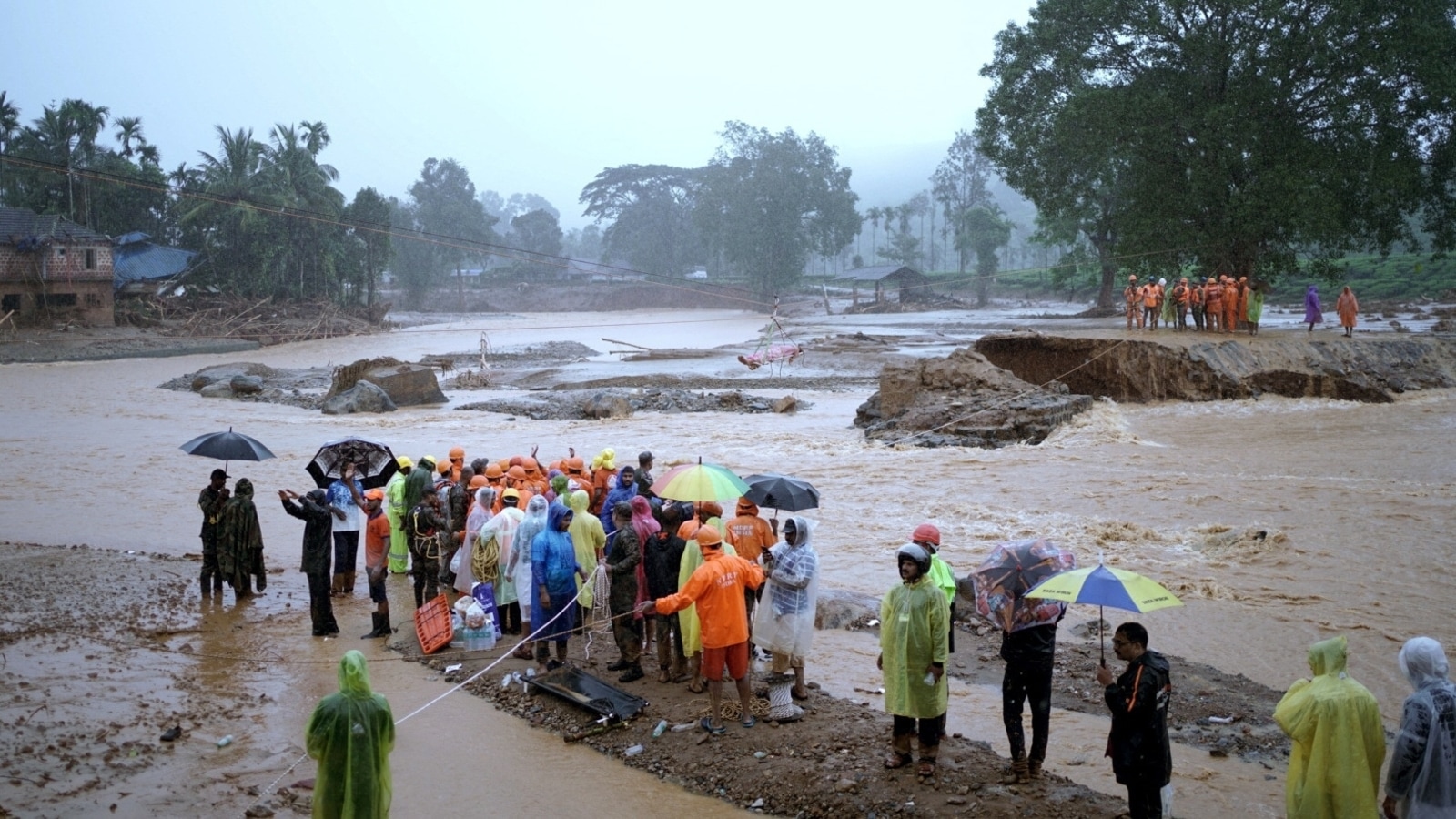The devastating landslides in Kerala’s Wayanad district, in which at least 84 (until Tuesday afternoon) died and scores were injured or trapped, underscore the urgent need for immediate micro-level mapping of landslip hazard zones throughout the state. This proactive measure is crucial for disaster preparedness and response.
Additionally, it underscores the importance of relocating and rehabilitating people residing in environmentally vulnerable danger zones. The state government has ignored this danger despite the devastating 2018 floods, which caused numerous landslides in hill districts like Wayanad and Idukki.
The Western Ghats, which run throughout Kerala, are prone to frequent landslides during the biannual monsoon seasons—the Southwest monsoon and the Northeast monsoon. Unlike other natural hazards, landslides can be triggered by various factors, such as slope failure, heavy rainfall, soil depth, earthquakes, thunderstorms, and human activities.
Anthropogenic factors include excavation at the toe of the slope, deforestation, quarrying, mining, and land use patterns, which also aggravate it. However, the primary factor causing landslides is heavy rainfall.
Experts said that in Wayanad’s Chooralmala and Mundakkai areas, the phenomenon of “soil piping” plays an important role in inducing the landslides.
They said the surface soil in the area is unconsolidated and unsorted. In such soil, rainwater causes underground flow, removing the clay content and causing interconnected tunnels. These interconnected tunnels act as paths for massive water discharge and soil erosion, and they are called piping.
In Wayanad’s case, environmental experts, including those in the Madhav Gadgil committee – which had called for the Western Ghats to be protected — had called for the rehabilitation of people residing on vulnerable hill slopes with an incline of over 22 degrees, given the possibility of widespread landslips and landslides. Those experts found the areas vulnerable including where the landslides occurred on Tuesday.
In recent years, the state disaster management authority divided the hill district into three, based on landslide susceptibility risks with a landslide susceptibility map for the district. However, rehabilitation was not initiated despite repeated warnings that extreme weather events could lead to tragedies.
A state government-commissioned study suggested setting up separate disaster management systems. Action plans for panchayats classified under the district’s high, medium, and low categories for landslide susceptibility. A separate study by the Kerala Sasthra Sahitya Parishad, a popular science forum, found that the district’s hill slopes have become unstable.
Following large-scale constructions carried out on the slopes by unscientifically levelling the slopes, many areas have become landslide-prone.
Several areas including Meppadi, Muppainad, Vythiri, Pozhuthana, Vellamunda, Thondernad, Mananthavady, Thirunelly, Muttil, and Kottathara are listed as places at high risk of landslides. Chooralmala and Mundakkai have a long history of landslides, and tea plantations have significantly contributed to the tragedies unfolding over the years.
C K Vishnudas, the executive director of the Hume Centre for Ecology, emphasised the need to rehabilitate people living in high-risk regions.
As stated in the Gadgil Committee report, Kavalappara in Malappuram district and Puthumala in Wayanad district, which witnessed multiple fatalities due to landslides in 2020, are included in the Ecologically Fragile Land (EFL) category.
In 2011, the Western Ghats Ecology Expert Panel (WGEEP) officially identified this area as having the greatest ecological sensitivity and named it Ecologically Sensitive Zone (ESZ)1.
T V Sajeev, a principal scientist at the Kerala Forest Research Institute, said that quarrying, the destruction of hills for construction purposes, extensive road construction and expansion in hilly areas, and the cultivation of single crops are significant factors contributing to landslides caused by heavy and continuous rainfall.
C.P. Rajendran, a geoscientist and professor at the Jawaharlal Nehru Centre for Advanced Scientific Research in Bengaluru, said Kerala urgently needs to establish unambiguous land management and water usage regulations.
In addition, it is imperative to develop enduring measures to mitigate the impact of annual floods and landslides, particularly affecting impoverished individuals residing in environmentally vulnerable areas.
Rajendran said that the state must implement land use zoning restrictions, including data on landslip susceptibility. Kerala encompasses approximately 19,000 square km of hilly terrain with slopes above 10 degrees. “These regions exhibit sparse vegetation cover and have experienced significant disruption due to human activities,” he said.
Hydrogeologist V R Haridas said the state must develop long-term measures to deal with landslides. Having conducted a thorough investigation of the Kavalappara and Puthumala landslides as part of the National Bank for Agriculture and Rural Development’s (NABARD) Climate Adaptive Project, this expert said that the soil composition in Kerala has seen significant and dramatic changes.
“The altered soil composition appears unable to endure intense rainfall, ” he said, adding: “Without comprehensive and scientific approaches, landslides resulting in significant casualties would occur yearly”.
Haridas said Wayanad is currently experiencing a situation where the slopes of the hills have been saturated due to exceptionally heavy rainfall in the past week. “If the rainfall continues, there is a genuine danger that it could cause lateral displacement and raise the likelihood of the overburden slipping,” he said.

